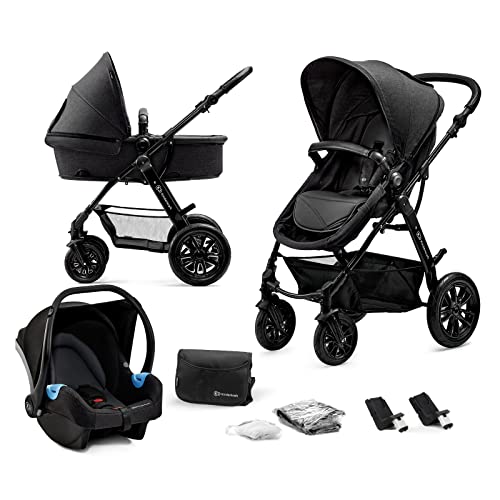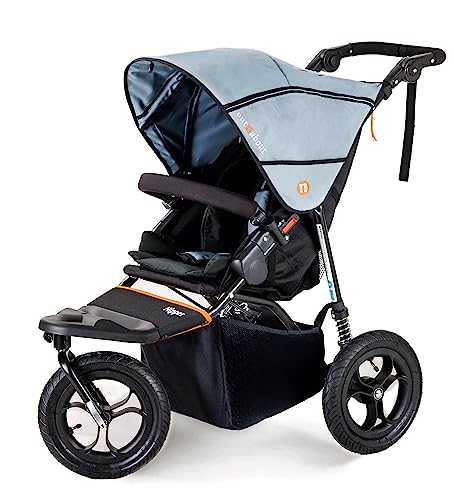Nine Things That Your Parent Teach You About Pushchairs From Birth
Warning: Undefined variable $PostID in /home2/comelews/wr1te.com/wp-content/themes/adWhiteBullet/single.php on line 66
Warning: Undefined variable $PostID in /home2/comelews/wr1te.com/wp-content/themes/adWhiteBullet/single.php on line 67
|
| Articles Category RSS Feed - Subscribe to the feed here |
|
|
 Choosing Pushchairs from Birth For Your Baby
Choosing Pushchairs from Birth For Your Baby
 A stroller, buggy, or pushchair is a way to transport young children. Prams are equipped with an a bassinet, carry cot or frame that can be used to attach an the cot. Newborns must lie flat.
A stroller, buggy, or pushchair is a way to transport young children. Prams are equipped with an a bassinet, carry cot or frame that can be used to attach an the cot. Newborns must lie flat.
When a baby is in good head control and can sit up and sit up, they can use an infant pushchair that has an incline that is either from or towards you. Many come with useful features like swivel wheels or enclosed carrycots and can often be utilized in 3-in-1 systems.
Rear-facing
When it comes to choosing a pushchair for your brand new baby There are a lot of options to think about including prams and pushchairs, to buggies and strollers. They may sound similar but there are significant differences between them. A pram is usually designed to lie-flat while a pushchair provides a seated position. Some babies can fit in both, whereas others need to use a carrycot until their heads and necks are strong enough to be supported in a seated position.
Many experts agree that it is recommended to use a pushchair with a parent’s face for infants as young as just a few months old. Babies are drawn to their parents and the visual connection it creates. Eye contact is essential to their emotional development as they begin to process stimuli around themselves. As they observe their parents’ interactions with one another they also begin to develop their language skills.
When babies are able to see their parents, they feel more secure and confident. They know they can count on their parents to safeguard their children and assist them in navigating their environment. This early trust can help children grow in confidence and feel well-being when they are toddlers and begin to explore the world.
You can easily monitor your child’s behavior while they are sitting in the pushchair. It’s easy to make sure that they’re comfortable and content, and also that their hat hasn’t fallen over their eyes or the wind isn’t blowing on their face. Babies who can see their parents are more likely to fall to sleep, as they feel reassured by the familiarity of their faces.
There are many options available if you want to keep the baby in a pushchair with its parent for as long as possible. Some are designed to change between forward-facing and front-facing, while others include an extended footmuff to keep your child warm in cold weather or a rain cover to keep the elements out. The Eezy S Twist+2 is a fantastic example of a multi-purpose pushchair that can be changed from a parent-facing to forward-facing seat unit at the flick of a lever. It can also be outfitted with an Cocoon S car seat, Cot S or carrycot to create an all-in-one Travel System.
Forward-facing
A pushchair with a forward-facing view allows children to explore and absorb the sights and sounds of their surroundings. They also get to see their parents, which is important for the social development of your child. Based on their own developmental milestones, most babies will be able to transition from the carrycot or pram for newborns to a forward-facing pushchair about six months. If they have enough neck and head control to to safely face forward, this is the right time.
Researchers have discovered that babies who sit with their parents in a pushchair facing towards the front are more likely to speak back and exhibit a lower heart rate, which suggests that they are less stressed. They are also more interested in what’s happening around them and with their parents. This helps stimulate their minds and help develop their communication skills. Parents are more likely to talk with their child when they can see eye contact with them. This is an reassuring and soothing experience for them.
There are many benefits of using a front-facing pushchair from birth, including being able to use it for longer walks. You can bring your child along to the grocery store and other activities that require walking. A pushchair or stroller will also let your child experience the same activities as their older siblings, which will help build their self-esteem and confidence.
Choose a pushchair that has many accessories like a seat liner, footmuff, and pram blanket. When the weather is hot the hood and a parasol will help protect your baby. Select a parasol that has an SPF rating or UV50+ and ensure it is designed to fit your My Babiie MB51 Stroller – Lightweight Travel Buggy and is easy to attach. Many brands offer a range of accessories that could be included in a bundle with the pushchair, while others are available separately.
Many pushchairs can convert to double size by adding an additional seat unit or carrycot, which is particularly useful for families who are expecting a second child soon after the first. Some of these models include everything you require to convert and some come with the option of a converter kit, which can be purchased separately.
All-terrain
If you live on an unpaved road, take a walk in the woods or go hiking often and require a pushchair designed for rough paths and rough terrain. All-terrain pushchairs are designed to withstand any terrain and come equipped with features like suspensions to cushion bumpy rides for your child so they don’t shake up more. The seat is angled to evenly distribute the force of bumpy terrain to your child’s head and neck.
There are many all-terrain pushchairs have three wheels and come with a front wheel that can swivel and lock into position to allow maximum maneuverability, which is important on rough surfaces. They will also have larger tires than your typical pushchair. This means that they can handle rougher paths and provide an easier ride for you child.
Another thing to consider when choosing an all-terrain pushchair is whether the wheels are filled with air or foam. Air-filled tyres feel smoother on rough terrain, but they do puncture more easily when you strike something sharp. The tyres that are filled with foam are more durable and are less likely to puncture, so this is the best option for a pushchair that is all-terrain.
Many all-terrain pushchairs can be converted from single to double mode for families that are growing, and some can be used as a travel system with car seat adaptors, making them excellent purchases for new parents. Certain models, like the Out ‘n’ About Nipper are suitable for newborns thanks to their slender seats and the fact you can carry a cot with them.
The Nipper also comes with a wide range of accessories for a pushchair that include a raincover as well as an earmuff. It is easy to store because it folds compactly with one hand and can stand on its own when folded. It also features a 360 swivel lockable front wheel, and foam-filled never-flat tyres, which mean you don’t need to worry about getting punctured on your walks.
Weight
The best pushchair will affect your travel style and the comfort of your baby. The right model will allow your child to grow and develop in comfort while allowing you to enjoy all the family adventures to come. It’s a significant investment, so make sure that you pick the one that fits your needs and budget.
Understanding the differences between the buggy, a travel system, and a single pushchair is the first step. This guide will help parents comprehend the terminology and determine what is right for their baby.
As the name suggests it is designed for infants or babies between 6 and 6 months of age. It allows the baby’s back to grow properly by allowing them to sleep on their backs. Some models also have a bassinet attachment that can be used for the first few months, giving your baby a secure and comfortable environment.
Be aware that not all pushchairs buggies claim to lie flat do exactly that. Be wary of claims from manufacturers that a pushchair will recline flat. Always read the fine print and learn what it means. Some pushchairs are able to recline a bit, but it is still better than the full-reclining seat.
When your baby can sit up on their own without assistance, it’s the right moment to put them in a pushchair. This is usually at around three or four months, however some littlies will begin sitting up earlier. It’s best to buy an infant pushchair that can be converted from a carrycot into an actual seat, so you have the flexibility you need and ensure your baby’s safety until they’re ready to move on to the next stage.
Parents like a lightweight pushchair with just one pedal to brake, particularly if they want to chat or carry shopping bags with their hands. Jessica is our MFM home tester, gave this model an A+, stating that “it handles superbly and has a smooth ride and the one-handed fold is a delight”. The lightweight model comes with Tru-Ride technology tyres, which are durable, puncture resistant and provide a high degree of performance.
Find more articles written by
/home2/comelews/wr1te.com/wp-content/themes/adWhiteBullet/single.php on line 180